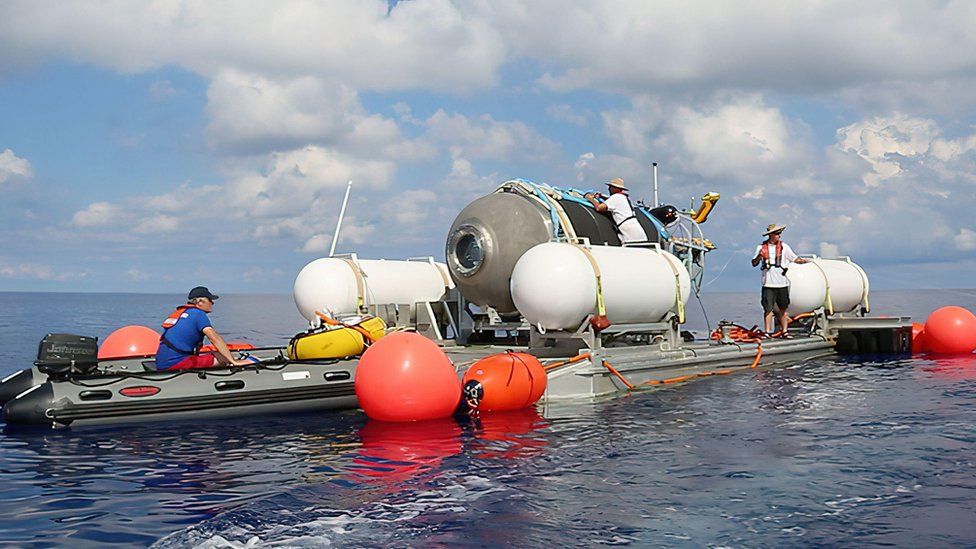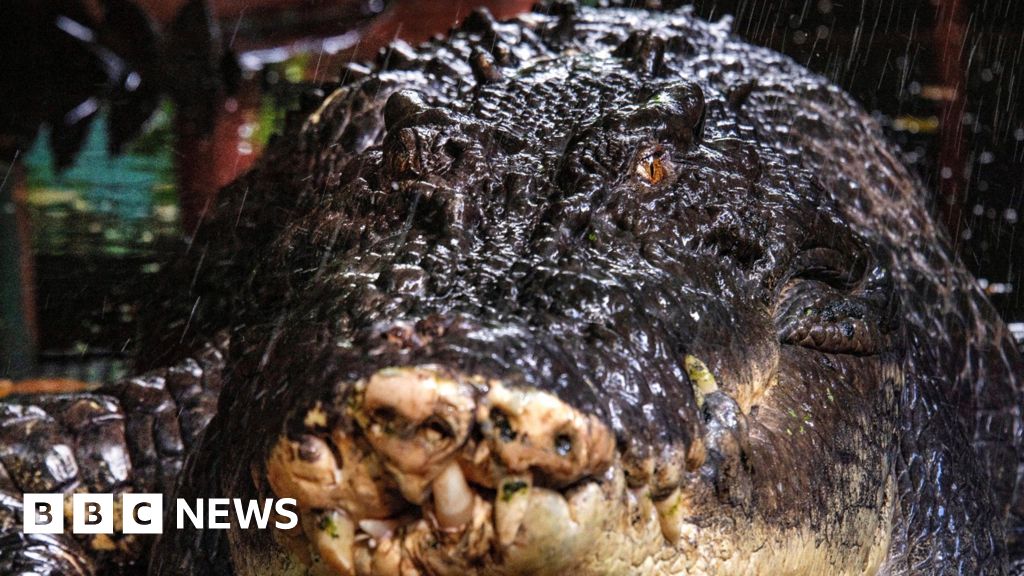ARTICLE AD BOX
 Image source, PA Media
Image source, PA Media
By the Visual Journalism Team
BBC News
Rescue teams are in a race against time after a tourist submersible carrying five people went missing during a dive to the wreck of the Titanic.
But how are rescuers trying to find a vessel that has already been missing for nearly two days in the vast depths of the Atlantic Ocean and what will the challenges be when they do?
Where is the search focused?
The crew of the Titan submersible lost contact with its surface vessel - the Polar Prince - an hour and 45 minutes after it began a dive to see the wreck on Sunday. On Monday evening, experts estimated it had enough oxygen to last about four days.
Titanic's wreck lies some 435 miles (700km) south of St John's, Newfoundland, though the rescue mission is being run from Boston, Massachusetts.
US and Canadian agencies, navies and commercial deep-sea firms are all helping the rescue operation, using military planes, a submarine and sonar buoys.
The Polar Prince has been joined in the area by the cable-laying ship Deep Energy, while the Atlantic Merlin tug and supply ship is on its way.
Alistair Greig, a UCL marine engineering professor, says one of the big problems is that rescuers do not know whether to look on the surface or the seabed - it is "very unlikely" to be in between - and warns searching each poses challenges.
Searching the surface
The US Coast Guard said research ship the Polar Prince - which is used to transport submersibles to the wreckage site and was the support ship on Sunday's tourist expedition - had conducted a surface search for the sub on Monday evening.
Three C-130 Hercules aircraft - two from the US and one from Canada - have also been involved in the search on the surface, trying to detect the sub from the air.
The USCG said 10,000 square miles had been searched by this morning.
Frank Owen, former director of the Australian submarine escape and rescue project, told the BBC the sub might be able to alert rescuers if it can reach the surface.
"There will be radio transmitters, GPS signals," he says. "There'll be strobe lights and radar reflectors to help the searching forces find them."
But if it can't send distress signals for any reason, Prof Greig says: "It's about the size of a large transit van and it's painted white so trying to see that from the air... is going to be a real challenge."
Changeable weather and poor visibility are also challenges that teams are having to contend with.
Searching the deep ocean
Rescuers must also comb depths that could reach nearly 4km (2.5 miles) for the 6.7m (22ft) long submersible - because radio and GPS signals can't travel through water.
The US Coast Guard confirmed it was extending the search into deeper waters on Tuesday. A Canadian P3 Aurora aircraft has arrived at the scene to conduct sonar searches and sonar buoys are also being deployed in the area.
Sonar buoys, or sonobuoys, detect and identify objects moving in the water - and are often used in the hunt for enemy submarines.
They either listen for sounds produced by propellers and machinery (passive detection) - which could also include the crew making noise against the hull of the sub - or by bouncing a sonar "ping" off the surface of the vessel (active detection) and listening for the returning echo.
Mr Owen cautions it will be very hard to find the sub while it is underwater because of its size and because it is in the middle of the debris field that resulted from the Titanic's sinking.
"It's like searching for a mine in a minefield," he tells the BBC, adding that it will be hard to know what is a rock and what isn't.
What emergency measures does the sub have?
A submersible vessel is different to a submarine. According to the National Oceanic and Atmospheric Administration, a submarine can launch itself into the ocean from a port independently, while a submersible has very limited power reserves so needs a mother ship that can launch it and recover it.
Last year David Pogue, from US TV network CBS, joined an OceanGate expedition to the Titanic and was told the submersible had seven safety systems to help it return to the surface.
- Triple weights: three lead pipes that can be dropped using hydraulics to gain buoyancy
- Roll weights: if the hydraulic systems fail those inside the sub can tilt the sub by moving to each side of it releasing weights held in place on each side by gravity
- Ballast bags: motors can be used to release bags full of metal shot hanging beneath the sub
- Fusible links: bonds that disintegrate after 16 hours in seawater to drop the ballast bags if the electrics and hydraulics fail
- Thrusters: to push it to the surface
- Sub's legs: the pilot can jettison the sub's legs as dead weight
- Airbag: the crew can inflate an airbag to provide buoyancy
What will rescuers do if it is on the sea floor?
US Coast Guard Rear Admiral John Mauger said it would need additional expertise to rescue the vessel if it was found underwater and he reaching out for help, including to the US Navy and the private sector.
According to OceanGate, the Titan is one of only five manned submersibles in the world capable of reaching the Titanic, which sits at 3,800m (12,500ft) below the surface.
Image source, Reuters
Image caption,The Titanic sits 3,800m (12,500ft) down at the bottom of the Atlantic (file image)
If the Titan is on the seabed and can't get back up under its own power, the options are very limited, according to submarine expert Prof Alistair Greig from University College London.
"While the submersible might still be intact, if it is deeper than more than 200m (656ft) there are very few vessels that can get that deep, and certainly not divers. The vehicles designed for navy submarine rescue certainly can't get down to anywhere near the depth of the Titanic."
Any attempt to search the ocean floor in that area would likely be carried out by an unmanned remotely operated vehicle (ROV).
The Deep Energy cable layer that arrived on the scene on Tuesday does have ROV capabilities, according to marine scientist David Mearns, but it is not clear if it has deployed an underwater vehicle yet or if it can reach the depths needed.
The US Navy does have an ROV that can operate at that depth and used it to locate and recover a crashed fighter jet from a depth of 3,780m (12,400 feet) in the South China Sea last year.
In that case, the US military used the ROV to attach rigging around the aircraft and connect it to a lifting hook that was lowered from a crane on the rescue vessel on the surface.
Ocean recovery expert David Mearns says that if an ROV can locate the Titan then it should be able to recover it.
"A world class ROV with twin manipulators can actually grab hold of [the Titan] or attach a lift line to it and slowly haul it to the surface," Mr Mearns told the BBC.

 1 year ago
31
1 year ago
31








 English (US)
English (US)